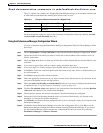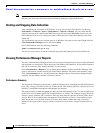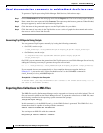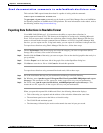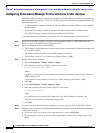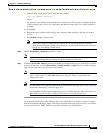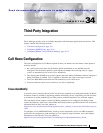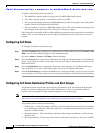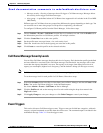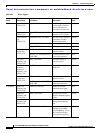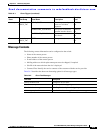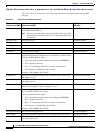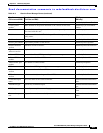
CHAPTER
Send documentation comments to mdsfeedback-doc@cisco.com.
34-1
Cisco MDS 9000 Family Fabric Manager Configuration Guide
OL-6965-03, Cisco MDS SAN-OS Release 2.x
34
Third-Party Integration
Fabric Manager provides tools to facilitate integration with third-party applications and devices. This
chapter contains the following sections:
• Call Home Configuration, page 34-1
• Configuring SNMP Events, page 34-11
• Configuring RMON Using Threshold Manager, page 34-13
Call Home Configuration
The actual configuration of Call Home depends on how you intend to use the feature. Some points to
consider include:
• An e-mail server and at least one destination profile (predefined or user-defined) must be
configured. The destination profile(s) used depends on whether the receiving entity is a pager,
e-mail, or automated service such as Cisco AutoNotify.
• The contact name (SNMP server contact), phone, and street address information must be configured
before Call Home is enabled. This is required to determine the origin of messages received.
• The Cisco MDS 9000 switch must have IP connectivity to an e-mail server.
• You must obtain an active service contract to use Cisco AutoNotify.
Cisco AutoNotify
If you have service contracts directly with Cisco Systems, automatic case generation with the Technical
Assistance Center is possible by registering with the AutoNotify service. AutoNotify provides fast time
to resolution of system problems by providing a direct notification path to Cisco customer support.
The AutoNotify feature requires several Call Home parameters to be configured, including certain
contact information, e-mail server, and an XML destination profile as specified in the Service Activation
document found on the Cisco.com website at:
http://www.cisco.com/univercd/cc/td/doc/product/voice/c_callmg/3_3/service/serv332/ccmsrvs/sssrvac
t.htm
To configure a Cisco MDS 9000 Family switch to use the AutoNotify service, an XML destination
profile must be configured to send messages to Cisco. Specific setup, activation, and e-mail address
information is found on the Cisco.com website at:
http://www.cisco.com/warp/customer/cc/serv/mkt/sup/tsssv/opmsup/smton/anoti_ds.htm



